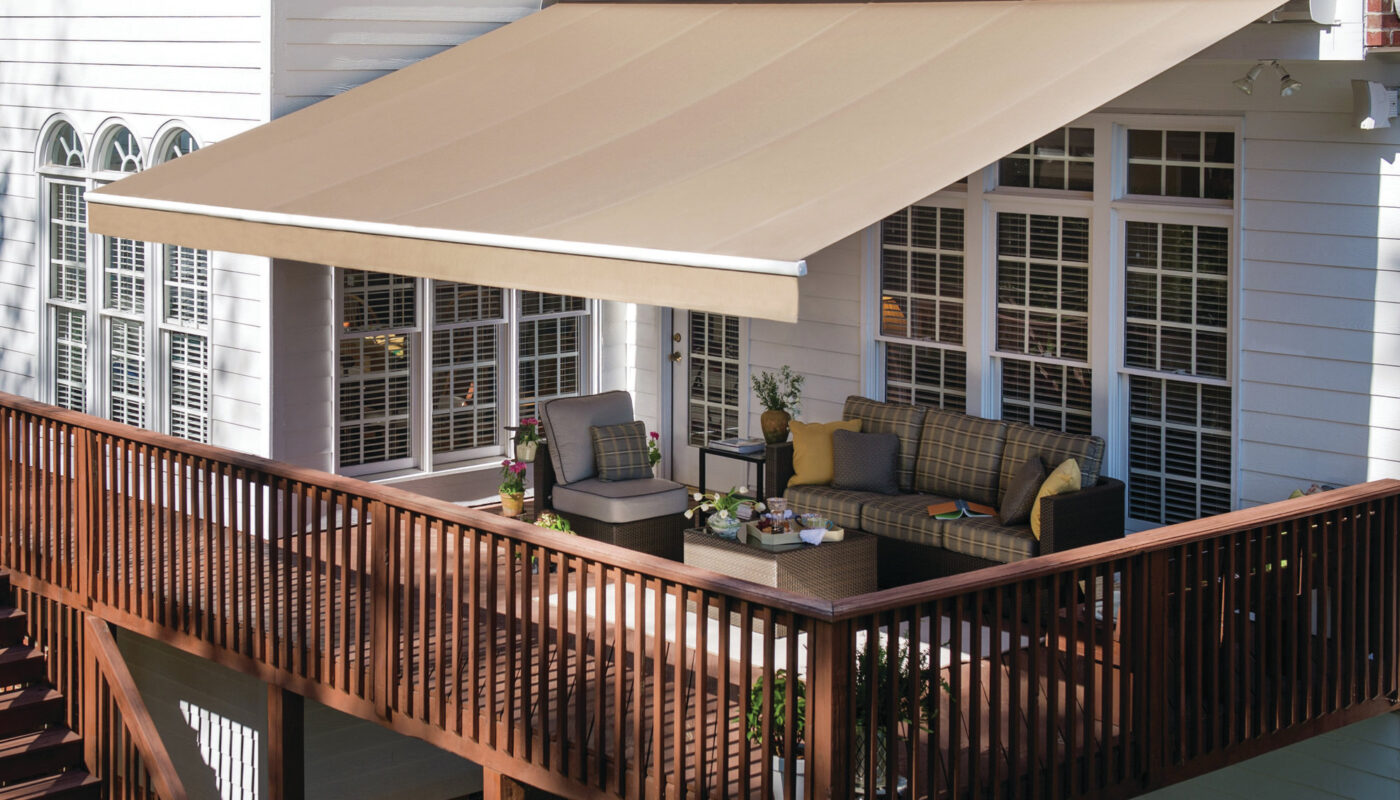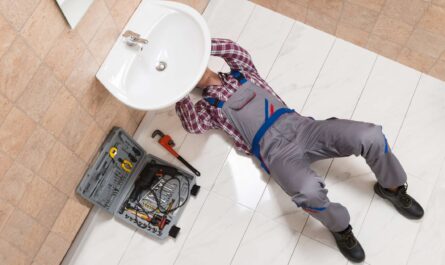Have you ever wondered about where awnings originated? The sunshades that you know today are value-adding extensions to the home. But only some know how far back they go in history.
These days, you install awnings to give your home a cozy appeal. For a hassle-free experience, you go for one of those motorized retractable awnings. They come with a remote control that allows you to operate them with zero effort.
Back then, it served a single purpose. It was to protect people and properties from the intense heat of the sun. It remains the same up to this very day. If you are curious about how the awning stayed valuable for millennia, read on and find out.
Page Contents
Awnings in the Ancient Times
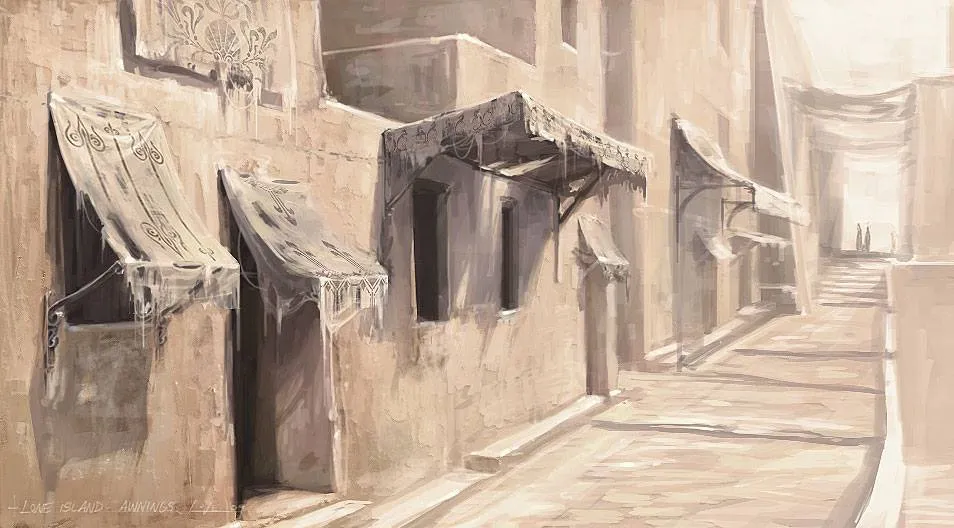
The retractable awnings you are familiar with today date back to ancient times. The first recorded awnings were in Syria and Egypt. At the time, they consisted of woven mats and hides. The people suspended them on poles to provide shade from the sun.
In the Roman Empire, people called it the velarium (from the word vela, Latin for sails). The velarium was a canvas awning that authorities installed in the Roman Colosseum.
The awning shaded spectators of games and events from the sun and bad weather. Experts estimate it protected between 50,000 and 87,000 people.
The fabric used for these antique awnings was the same canvas used in ship sails. The linen shade cloth later replaced the canvas material since it was lighter.
The set-up consisted of shade cloths, ropes, pulleys, timber frames, and iron sockets. The structure opened and closed using a framework of cords.
The velarium that covered the Colosseum weighed 24 tons. It consisted of long fabric linen (or wool) strips attached together. Ropes that hung from 240 masts held the strips.
Workers set the masts in sockets around the valence of the Colosseum. Historians stated that Romans used a military fleet to raise and lower the shades.
A unit of marines, called vexillatio, raised and lowered the velarium, like sails on a ship. The fleet had 1,000 experienced sailors who operated the gigantic awnings.
The reason is that the enormous structures required their sailmaking and rigging skills. In 50 B.C., the Roman poet Lucretius likened thunder to the sounds made when sailors put up the velarium.
The Advent of Modern Awnings
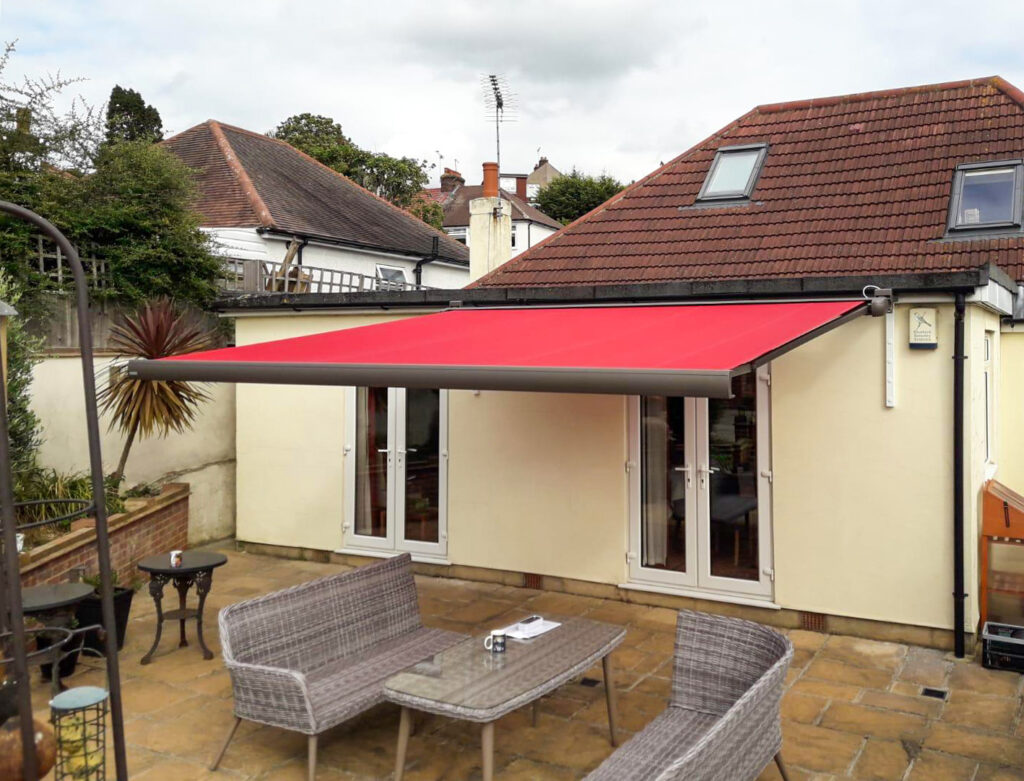
In the 19th century, operable awnings provided protection from different weather conditions. There were awnings for homes, stores, offices, and buildings.
Manufacturers also built awnings for wagon umbrellas, buggies, and horses. The shades did not only offer protection from harsh weather. They also provided a decorative touch.
One issue users had was that the material did not provide enough protection from the weather. Often, the moisture would pool on the fabric.
They also needed to keep folding the fabric so it would not look messy. These issues resulted in manufacturers producing the roller awning.
The roller awnings had fixed arms connected to a flexible slide rod. The canvas wrapped around a wood or metal cylinder whenever users retracted the framework.
When the awning was in full retraction, only the valence was visible. It resulted in more headroom.
The protective shades around this time had plumbing pipes as frames. It was a significant change from the Roman-era structure that used timber frames.
Plumbing pipes further evolved. Today, manufacturers use various materials for their awning framework. These include aluminum or stainless and galvanized steel.
20th Century Retractable Awnings
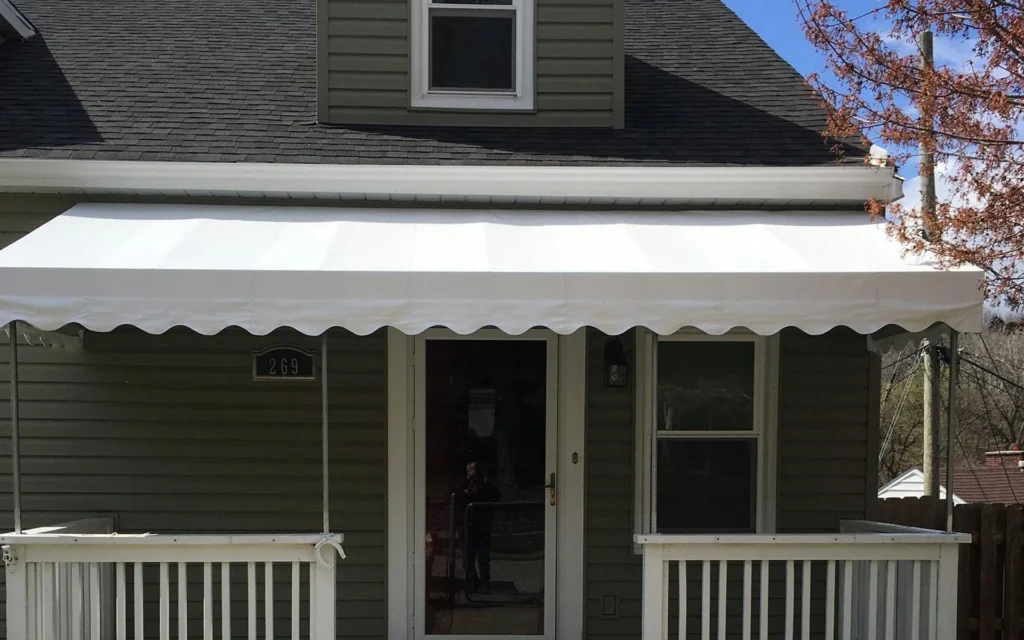
From the mid-19th to the 20th century, awnings became functional and decorative. They have developed into structures that enhance the visual appeal of a home or business.
Since it is easy to paint metal, it was possible to match the appearance of the shade provider with the property design. It is why many awnings today are available in different colors.
The retractable units are one of the more recent creations in the history of awnings. While they function like canopies, they are not stationary. They use either a hand crank or a motorized system to extend them during hot days or in bad weather.
Fabrics used to make awnings also evolved. It went from simple linen and canvas to polyester vinyl composites and acrylic. Modern fabrics are also resistant to water, ultraviolet rays, mildew, stains, and scratches. Today, you can choose among diverse colors and shades that complement your property.
Awnings and Energy-Efficiency
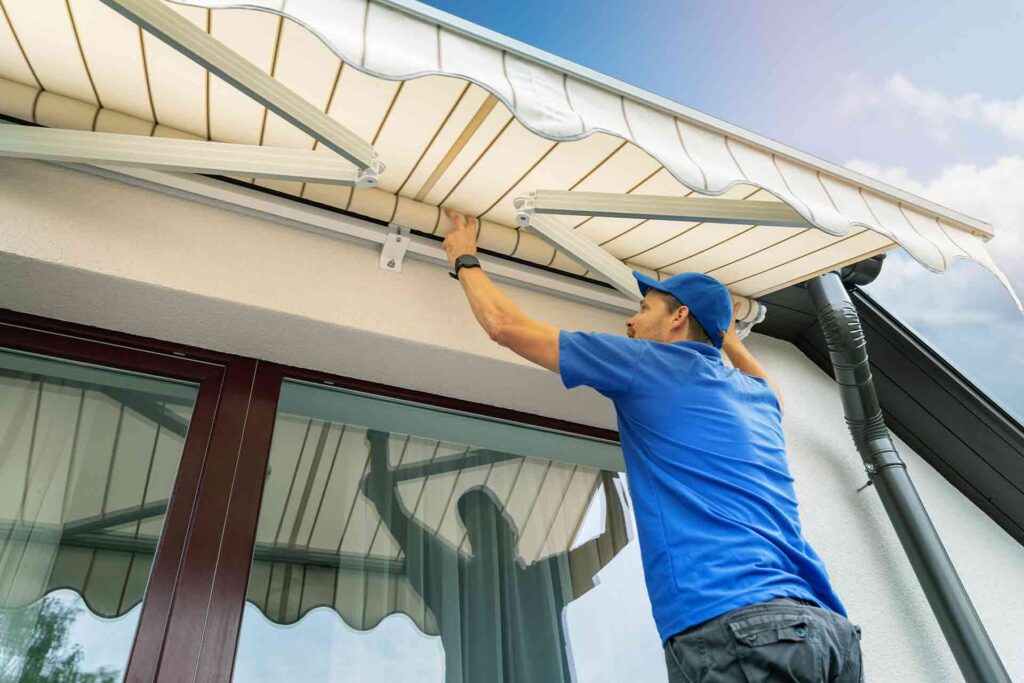
These days, efforts to lessen environmental impact led to property owners installing awnings. With these shade providers, cooling down an area without using energy is possible. They also add aesthetic interest to the home or business.
The invention of air conditioners provided cooling capabilities to a home as well. But today’s soaring energy prices are causing a shift to energy-saving methods.
Electric bills have increased by 20% to an average of $540. In most households, 12% of the energy costs go to air conditioning. In areas with humid climates, it goes up to 27%.
But air conditioning is a must for American residents. It is because more than 700 people die from heat-related causes every year. Awnings present an energy-efficient and cost-effective option for this problem.
The savings that the installations provide make them attractive options for electricity-consuming appliances. Industry experts estimate that homes using awnings reduce air conditioning costs.
Awnings cut direct solar gains, helping homes to save about $200 or more annually. The shade providers also help cut energy demand.
The Final Takeaway
Retractable awnings have had a long and rich history. From being simple shade providers, they went to functional and decorative accessories.
From plain canvas wrapped in timber framing, they expanded to countless choices. They are now available in different fabrics, colors, and metal frames that retract. Both homes and businesses enjoy the benefits they offer today.
The evolution of the awnings is an astonishing journey. Armed with this knowledge, you cannot help but look at these creations with new respect. So, if you plan to upgrade your home, why not install retractable awnings?
These structures are among the most reliable installations to ever grace homes and businesses since ancient times. To ensure you get the best results, you must hire an experienced service provider.
